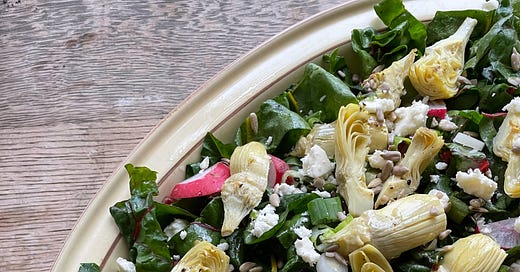Spring salad of blistered artichoke hearts & rainbow chard
With recent review on home gardening & health during the pandemic, + my latest podcast interview
Hello friends,
The warm-up we experienced mid-month was a bit of a tease as I watch the rain pour down outside my kitchen window. The steady rain (soon to be snow) called for a Saturday of slow cooking with braised beef short ribs and a bright spring salad. In this newsletter, I’ll share my new spring salad recipe and explore a recent review which exam…
Keep reading with a 7-day free trial
Subscribe to Michelle Seguin MD to keep reading this post and get 7 days of free access to the full post archives.




